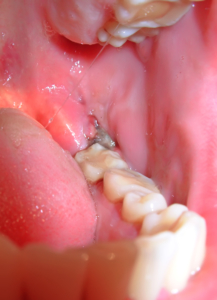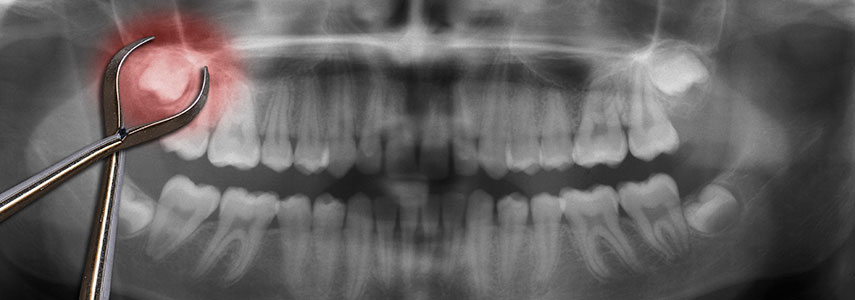The extraction of the wisdom tooth is a fairly widespread oral surgery, but it can give rise to various complications from the clinical point of view.
Wisdom tooth extraction: post-surgery complications
The extraction of teeth, including that of the wisdom tooth could be inevitable in the cases of:
- teeth included;
- acute inflammation;
- deep caries;
- deep fractures.
Surgery for thewisdom tooth extraction it can be very complex due to the location of the tooth root. Among the most critical complications that an oral surgery to extract a tooth may involve, there are:
- pericoronitis;
- abscess;
- swelling;
- trismus (ie a contracture of the jaw muscles);
- inferior alveolar nerve lesion (temporary or permanent).
Wisdom tooth extraction: reduce complications
 Modern dentistry has among its main goals the reduction of pain, many studies are oriented to find innovative solutions to ensure maximum surgical efficiency without entailing traumatic consequences for the patient.
Modern dentistry has among its main goals the reduction of pain, many studies are oriented to find innovative solutions to ensure maximum surgical efficiency without entailing traumatic consequences for the patient.
As for the wisdom tooth extraction, we are evaluating the use of piezoelectric surgery for a less invasive intervention approach that minimizes post-operative consequences.
Comparative surgical techniques
Last February, a study was published in the journal Oral Surgery in which two different surgical techniques were compared for the extraction of third molars, wisdom teeth. A technique with a piezoelectric handpiece and a technique with a traditional surgical handpiece were compared.
The sample analyzed for the research consisted of 30 patients undergoing wisdom tooth extraction surgery. The initial clinical conditions were detected in the first phase. The patients were then divided into two groups, one treated with piezoelectric surgery and the second group with traditional surgery.
To compare the two different techniques of oral extraction surgery, the following parameters were taken into consideration:
- timing of the intervention;
- bleeding during the surgical phase;
- pain;
- post-operative swelling;
- damage to the alveolar nerve.
The other phases of the intervention, such as anesthesia and surgical extraction phases, were identical for both groups.
Results of the study
The data collected during the research phase did not reveal any statistically relevant data on the differences between the two different surgical techniques.
Post-operative pain and swelling are almost similar, while there was less bleeding with the surgical technique with a piezoelectric handpiece compared to traditional surgery.
There is no evidence of particular trauma, on the whole sample only in two cases there was a paresthesia of the alveolar nerve following the extraction of the wisdom tooth and both were in the standard surgery group.
It can therefore be concluded that the two surgical techniques for the extraction of third molars are both valid.
















